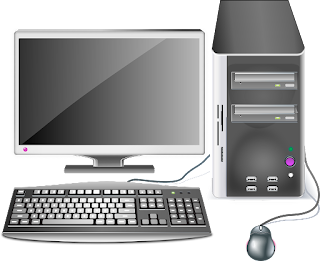Computer hardware
These components work together to enable the functioning of a computer and its various processes.
Here are some key hardware components typically found in a computer:
Central Processing Unit (CPU):
Often referred to as the "brain" of the computer, the CPU carries out most of the processing within a computer. It performs calculations, executes instructions, and manages data flow between different components.
Motherboard:
The motherboard is a circuit board that connects and allows communication between various hardware components. It provides the foundation for all other components to interact with each other.
RAM is the temporary storage space that holds data and instructions that the CPU is currently working on. It provides fast access to data and is essential for the smooth execution of programs.
Hard Disk Drive (HDD) or Solid State Drive (SSD):
These are storage devices that store data in a non-volatile manner, meaning the data is retained even when the computer is turned off. HDDs use rotating magnetic disks, while SSDs use flash memory chips. They store the operating system, applications, and user data.
Graphics Processing Unit (GPU):
It is specifically designed to handle complex graphical calculations and is essential for gaming, video editing, and other graphics-intensive tasks.
Power Supply Unit (PSU):
The PSU converts electrical power from the wall outlet into usable power for the computer. It supplies power to all the components within the system.
Input and Output Devices:
These include devices that enable interaction with the computer. Examples of input devices are keyboards, mice, and scanners, while output devices include monitors, printers, and speakers.
Expansion Cards:
These are optional components that can be added to a motherboard to enhance its capabilities. Common examples are graphics cards, sound cards, and network interface cards.
Cooling System:
As computers generate heat during operation, cooling systems such as fans, heat sinks, and liquid cooling are used to prevent overheating and maintain optimal temperature levels.
Cables and Connectors:
Various cables and connectors are used to establish connections between hardware components, such as SATA cables for connecting storage devices, USB cables for peripherals, and HDMI cables for video and audio output.
These are just some of the fundamental hardware components found in a typical computer system. The specific configuration and capabilities of a computer can vary depending on its intended use, such as personal computers, servers, laptops, or specialized systems like gaming rigs or workstations.
Motherboard
It is a large circuit board that serves as a central hub connecting various hardware components, allowing them to communicate and work together effectively. The motherboard provides electrical connections and physical slots for components such as the processor (CPU), memory (RAM), storage devices, expansion cards, and other peripherals.
The main functions of a motherboard are as follows:
Component Integration:
The motherboard integrates and connects various components, acting as a platform for them to interact. It provides sockets and slots to install the CPU, RAM modules, graphics card, sound card, network card, and other expansion cards.
Power Distribution:
The motherboard receives power from the power supply unit (PSU) and distributes it to the connected components. It has power connectors, such as the main ATX power connector and auxiliary power connectors, to supply power to the CPU and other peripherals.
Data Communication:
The motherboard facilitates data transfer between different components. It has a chipset that manages data flow between the CPU, RAM, storage devices, and other connected hardware. The chipset also provides interfaces, such as SATA (Serial ATA) or M.2, for connecting hard drives, solid-state drives (SSDs), and optical drives.
BIOS/UEFI:
The motherboard contains a firmware chip known as the Basic Input/Output System (BIOS) or Unified Extensible Firmware Interface (UEFI). This firmware initializes the hardware during startup and provides configuration settings for the system. It also enables the operating system to communicate with the hardware.
Expansion Slots:
Motherboards feature expansion slots that allow users to add additional functionality to their computers. These slots are commonly used for graphics cards, sound cards, network cards, and other expansion cards. The most common expansion slot today is the PCIe (Peripheral Component Interconnect Express) slot.
Connectivity:
The motherboard provides ports for connecting external devices, such as USB ports, audio jacks, Ethernet ports, video outputs (HDMI, DisplayPort, VGA), and more. These ports enable the computer to interact with peripherals like keyboards, mice, monitors, printers, and speakers.
It's important to note that motherboards come in different form factors, such as ATX, Micro ATX, and Mini ITX, which determine their size and layout. The form factor dictates the physical dimensions, mounting points, and compatibility with computer cases. Choosing the right motherboard that suits your needs and is compatible with your desired components is crucial when building or upgrading a computer system.







0 Comments